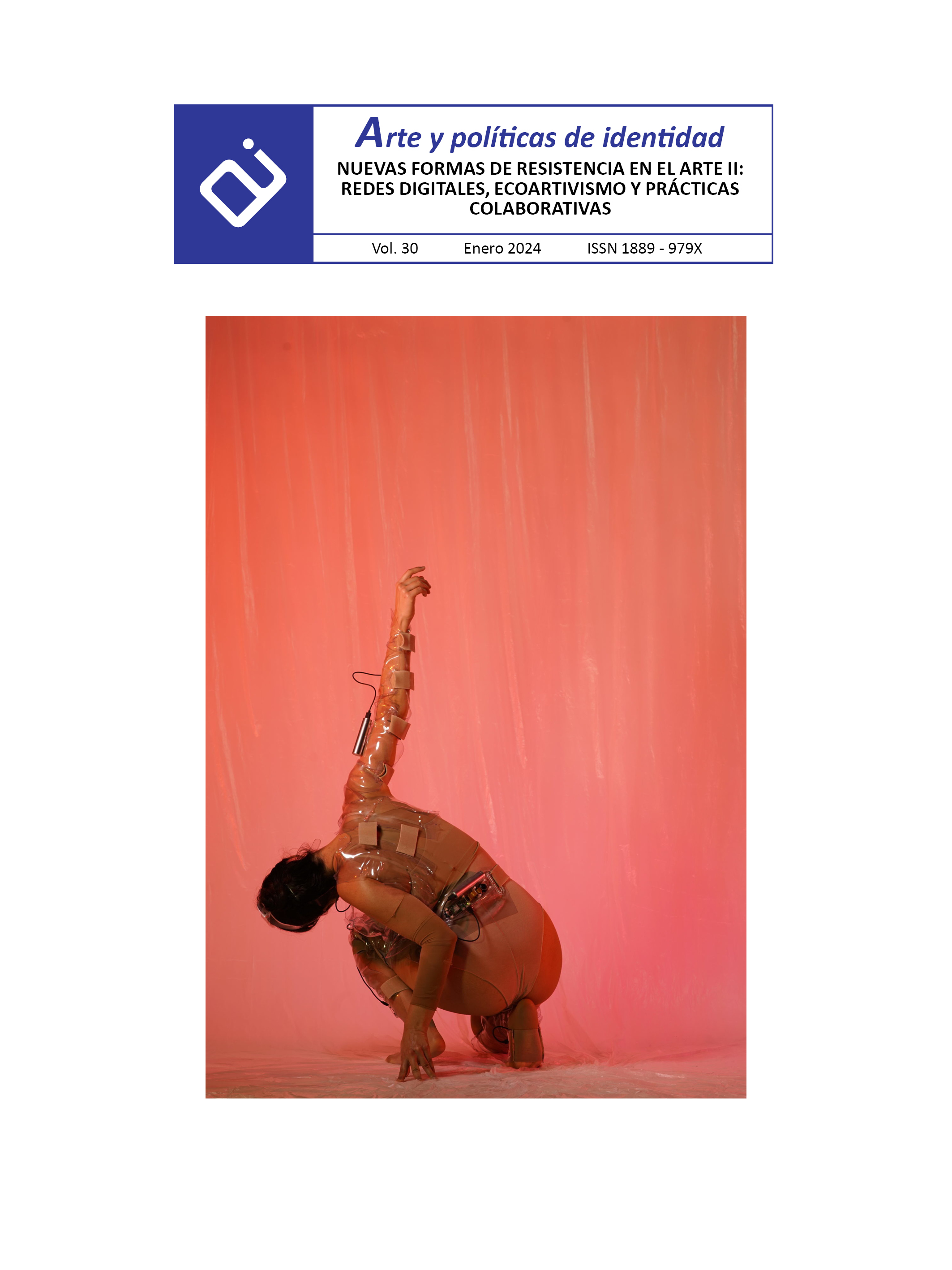Another place, another body, another time. Transformation, nature, and spirituality in Wolfgang Laib’s work
Abstract
As one of the most distinguished figures in contemporary art, Wolfgang Laib (1950) bonds in his oeuvre past and present, the ephemeral and the eternal, the sensorial and the metaphysical, conceptual structures and natural elements, the human and the cosmic. Employing highly symbolic materials such as milk, pollen, beeswax or rice, the German artist create powerful installations that are immersive as they are numinous. His work is based on repetitive gestures and long, cyclical processes marked by the seasons and celebrated in communion with nature. Drawing from Eastern philosophies as well as pre-Renaissance thought, Laib distances himself from Western ideas and anthropocentric convictions in order to restore a more balanced relationship between humankind and the natural world. This text examines his disciplinarian, time-based, and ritualistic methodologies for the purpose of manifesting how art can open up unexpected realms of deeply universal knowledge and reflective contemplation. Due to all the above, we argue that Laib’s minimalistic yet radical visual poetry can be read as a forward-looking vision of resistance and renewal.
Downloads
-
Abstract230
-
pdf (Español (España))245
References
Art21. (2014). “Wolfgang Laib in Legacy”. https://art21.org/artist/wolfgang-laib/
Battista, S. (2018). Posthuman Spiritualities in Contemporary Performance: Politics, Ecologies and Perceptions. Springer.
Bentini, R. “The mystery of bees or in between Heaven and Earth”, in Laib, W. (2014). Wolfgang Laib at Sant’Apollinare in Classe. Gian Enzo Sperone.
Buchman, A. “A conversation between Wolfgang Laib and André Buchmann”, in Buchman Gallery Berlin (2007), Wolfgang Laib: Reishäuser.
Bui, P. (May 2018). “Wolfgang Laib with Phong Bui”, in The Brooklyn Rail. https://brooklynrail.org/2018/05/art/WOLFGANG-LAIB-with-Phong-Bui
Jorgenssen, D. J. (July-December 2005). “Wolfgang Laib: Returning to What Is. An Interview with Wolfgang Laib”, in e-maj, 1. https://emajartjournal.files.wordpress.com/2012/08/darrenjorgensen.pdf
Jurt, D. “In pursuit of timelessness”, in Bünder Kunstmuseum Chur (2022), Wolfgang Laib. Crossing The River. Lars Müller Publishers.
Laib, W. “Statement”, in Risalti, S. (2022). Wolfgang Laib in Florence. Hirmer.
Marini, M. G. “Bees and Beauty”, in Laib, W. (2014). Wolfgang Laib at Sant’Apollinare in Classe. Gian Enzo Sperone.
Menegoi, S. “Florilegium for Wolfgang Laib”, in Bernasconi , F, and Franciolli, M. (2017), Wolfgang Laib. Edizione Casagrande.
MoMA. (n.d.). “Wolfgang Laib. Milkstone. 1978”. https://www.moma.org/audio/playlist/50/754
Ottman, K. (November 1986). “Wolfgang Laib”, Journal of Contemporary Art. https://jca-online.com/laib.html
Ottman, K. “The solid and the fluid: perceiving Laib”, in American Federation of Arts (2000), Wolfgang Laib: a retrospective”. Hatje Cantz Publishers.
Pagé, S. “Interview of Wolfgang Laib by Suzanne Pagé”, in Laib, W. (1989). Wolfgang Laib. Fundació Joan Miró.
Risalti, S. “Wolfgang Laib and Florence”, in Risalti, S. (2022). Wolfgang Laib in Florence. Hirmer.
Rowell, M. “Substance as essence”, in Laib, W. (1989). Wolfgang Laib. Fundació Joan Miró.
Soler, J. (2020). La orilla celeste del agua. Siruela.
Sönmez, N. “Where matter probably becomes enery – or immaterial”, in Museum Folkwang Essen (2009), Wolfgang Laib. The Nine Planets. Hatje Cantz.
The Museum of Modern Art. (March 1, 2013). “Wolfgang Laib, Pollen from Hazelnut | MoMA”. https://www.youtube.com/watch?v=e-_92MYcANk
Thierolf, C. “You willg go somewhere else”, in Risalti, S. (2022). Wolfgang Laib in Florence. Hirmer.
Tossato, G. No title. In Carre d’Art, Musée d’art contemprain de Nîmes. (1999). Wolfgang Laib, Somewhere Else. Cantz Verlag
Tolentino, J. (2017). Pequeña teología de la lentitud. Fragmenta.
Zumthor, P. “Wolfgang Laib in conversation with Peter Zumthor”, in Bünder Kunstmuseum Chur (2022), Wolfgang Laib. Crossing The River. Lars Müller Publishers.
Copyright (c) 2024 Servicio de Publicaciones de la Universidad de Murcia

This work is licensed under a Creative Commons Attribution-NonCommercial-NoDerivatives 4.0 International License.
Works published in this journal are subject to the following terms:
- The Service of Publications from the University of Murcia (publishing house) keeps the published works’ copyrights, and favors and allows the reuse of these works under the license indicated in point 2.
- Works are published in the journal’s online edition under the license Creative Commons Reconocimiento-NoComercial-SinObraDerivada 3.0 España(texto legal). They can be copied, used, disseminated, transmitted and publicly exhibited, as long as: i) the author and original source of publication are cited (journal, publishing house and work’s URL); ii) they are not used for commercial purposes; iii) the existence and specifications of this license are mentioned.
3. Conditions for auto-file. It is allowed and encouraged that authors share electronically their pre-print version (the pre-reviewed version) and /or post-print version (the reviewed and accepted version) of their Works before the publication, since it promotes its circulation and dissemination. RoMEO color: green.










